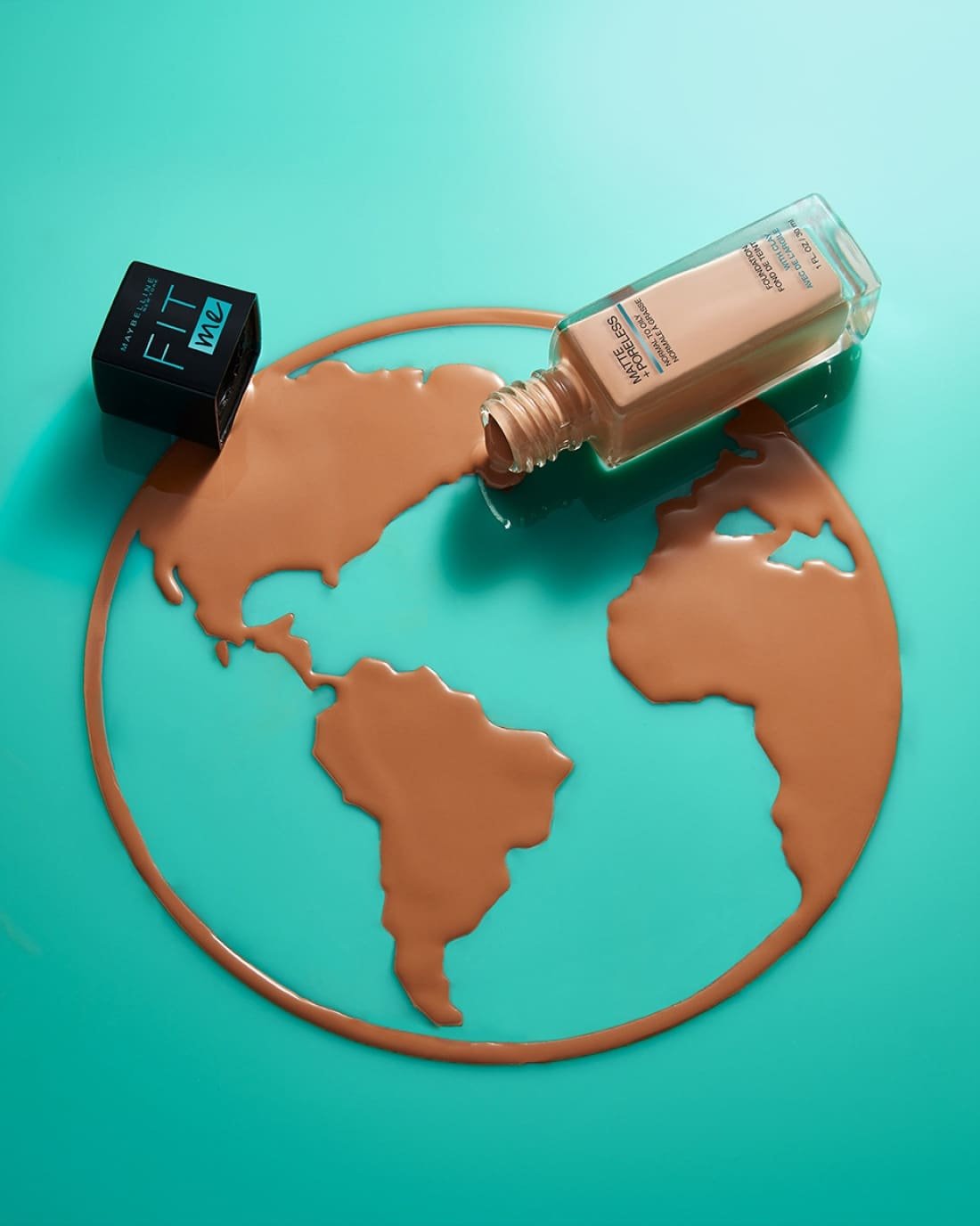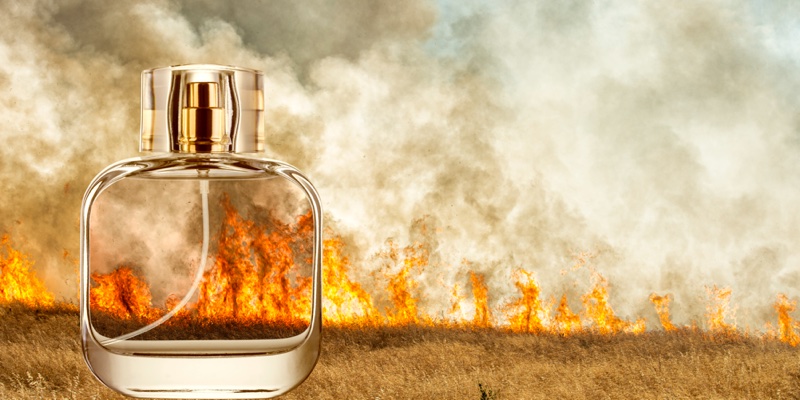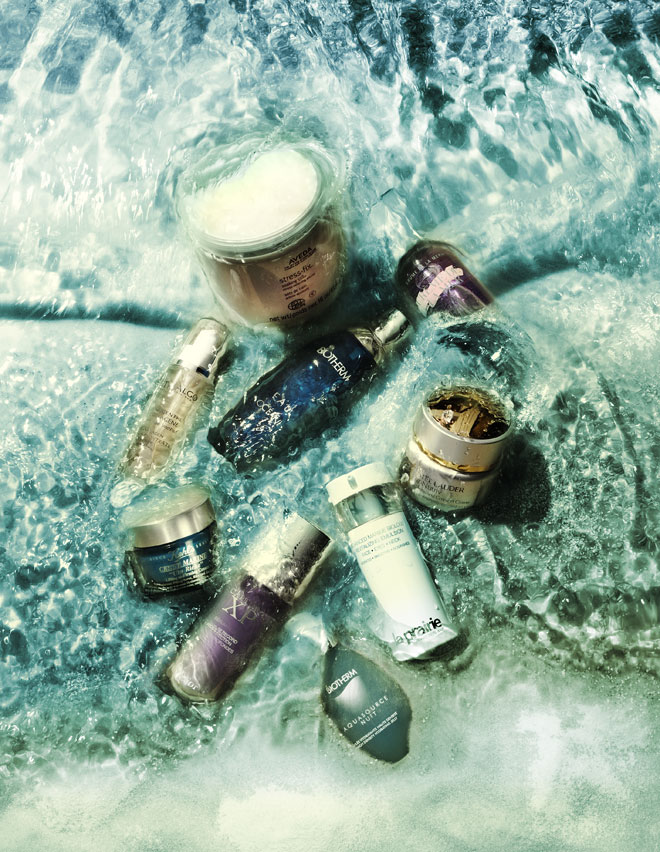The beauty industry presents yet another challenge in the fight against the climate crisis. While we’re all familiar with the harmful chemicals in products and the ethical concerns of animal testing, this industry’s impact on climate change runs deeper than most realize.
Cosmetic is a very broad term with a wide range of products. Not all “personal care” products are considered cosmetics though. Cosmetics are items like toothpastes, shampoos, perfumes, lipsticks, skin moisturizers, nail polishes, deodorants, hair dye, and eye and facial makeup. Some products, however, are considered in the drug category like treatments for dandruff or acne, mouthwash, skin protectants like lip balm, and antiperspirants.
Environmental Impacts
Carbon Footprint:
It’s almost impossible these days to not produce a carbon footprint. A carbon footprint is the amount of carbon dioxide emissions associated with a product, activity, or person. Every beauty product on the shelves, lipstick, shampoo, perfume, toothpaste, eyeshadow, all have a carbon footprint.
These emissions are produced by exporting ingredients, manufacturing, and transportation to stores or homes. Some products produce more carbon dioxide because the manufacturing process is more difficult. An example would be extracting aloe, green tea, cucumber, etc. to be placed in products to enhance the naturality or the scents.
Pollution:
Pollution is everywhere and while some brands are working to “go greener,” it’s hard to avoid the production of carbon emissions. There are three main kinds of pollution that are concerning when considering cosmetics.
Packaging:
The process of packaging creates pollution as well as the packaging itself that is thrown out. The creation of cosmetic packaging produces emissions from plants and factories. It requires a lot of energy to create enough product for the demand. The packaging itself creates pollution when it’s carelessly thrown away. Whether that’s the clear plastic that seals the product in the store or the containers in which the product is emptied. These small plastics, lipstick tubes, perfume bottles, mascara tubes, etc. are not biodegradable and remain in the environment for years before being picked up, buried, or eaten. “The cosmetics business is the fourth biggest plastic packaging user globally and plastic is about 67% of the industry’s packaging volume, according to Vantage Market Research. Beauty giant L’Oreal used 144,430 metric tons of plastic in its packaging material in 2021, for example, according to the Ellen Macarthur Foundation (EMF). And only 9% of the global plastic waste is recycled, according to a report from the Organization for Economic Co-operation and Development. The United States only recycles 4% of its plastic waste.” (CNN) This is crazy…
Transportation:
After manufacturing the products in the factories, they are then typically shipped to a multitude of stores to be sold. Walgreens, Sephora, Ulta, Target, Meijer, Walmart, etc. all have shampoos, perfumes, nail polishes, deodorants, mascaras, and toothpastes. Trucks, trains, and planes all create an immense amount of carbon emissions when they deliver Crest Toothpaste and Old Spice Spray Deodorant to every Target in Michigan and even more if the groceries are delivered to the home. “2023 research by Statista found that mobility from land, air, and sea is still heavily reliant on polluting internal combustion engines (ICEs), producing roughly 8.4 billion metric tons of carbon dioxide equivalent (GtCO₂e). This accounted for approximately 16 percent of global greenhouse gas (GHG) emissions in 2023, making transportation the second-largest source of emissions worldwide.” (BeautyMatter)
Air pollution:
You wouldn’t think much about air pollution when you think of cosmetics but it’s not just the transportation that contaminates the air. Ever walk into a hair salon on the day of prom? The wafting smell of heat protectant and hair spray is intoxicating. Or walking into Victoria’s secret at the mall, perfume. The locker room, deodorant. These products also contaminate the air even if it’s not carbon dioxide. These intense scents pollute the air we breathe.
Water Usage:
Clean, fresh water is becoming increasingly scarce. With more cities experiencing droughts each year and rainfall diminishing due to climate change, the need to conserve water has never been greater. Yet we are using this resource in products like makeup. Water is one of the most common ingredients found in cosmetic products like foundations, moisturizers, primers, lip glosses, and highlighters. Some brands are working to develop waterless products to help reduce their environmental impact.
Many brands are actively working towards creating a positive environmental impact. By reducing their carbon footprint, they are developing solutions to minimize product waste, incorporating more natural ingredients, and using less water in their processes.
It's a step in the right direction, and change is possible.
FDA
The FDA (Food and Drug Administration) cannot recall cosmetics for product contamination which allows industries to get away with more than the average product. While they do require the industries to properly label their products, they can still do what they want even if they have to do damage control every now and then.
Greenwashing
Greenwashing is when a brand markets their products to be natural and sustainable when really, they’re not. These companies promote themselves and their products to be a better option over other cosmetics when sometimes, they use harmful ingredients like formaldehyde or even test on animals before release. It is so important to do your research when deciding to invest in a product for your health and for the environment.
Brands that are working to become greener brands
REN
Aveda
Lush
Herbivore
Giorgio Armani
While this post is not to stop you from using cosmetic products, it is to remind you that everything you use is a risk so do your research!









This blog is a powerful reminder that beauty comes at a cost, sadly it falls onto the planet. It's eye-opening to realize how much impact packaging, water usage, and even air pollution from scents can have.
ReplyDeleteNot sure if these industries would have one, but I know some companies do waste reclamation. For example, some hair product producers (shampoos, conditioners, hairspray) will let you print out a shipping label that you could slap on a box full of empty or near-empty shampoo bottles, and have shipped at no cost to you personally.
ReplyDeleteOf course, the best course of action is to reduce the amount of plastic produced in the first place. But in the meantime, these kinds of programs may be worth checking out! (It's not just beauty products, either! Some of these programs include white-out bottles, markers, and other unconventional plastic products.)
I hope these programs become widely advertised. I know so many people who will joke about how hard it is to recycle and admit they never try due to the convenience of throwing it out. If the opportunity was shoved in their face, too simple to refuse, I bet the world would look much different.
DeleteClimate change will stay if we dont start to really break down the many causes we know and uncover the other causes that we dont think about, in this case.......beauty
ReplyDeleteI didn't know that cosmetic's had their environmental impacts, I am glad that some of these companies have realized that they need to make their products more green.
ReplyDeleteThis was a very informative blog post and I really liked how at the end you listed brands that are trying to become greener. Because like you said at the end this will allow people to use cosmetic products while also allowing them to support green companies.
ReplyDeleteThis was such an interesting post! As a consumer some of the biggest impacts we can make is with our purchasing power so its important to stay conscious of how our choices affect the environment.
ReplyDeleteI was really surprised at the statistics in this post! I had no clue how detrimental the cosmetics industry is to the environment. I was shocked to see “The cosmetics business is the fourth biggest plastic packaging user globally". I never considered how much plastic is used in cosmetic packaging.
ReplyDeleteThis was such a wonderful post that brought to light the little ways we all are contributing to destruction even if we can't see it all the time. I recently switched to a bar shampoo and bar conditioner that ships in paper packaging and I felt like more innovation like this could transform the cosmetic industry. Another dimension is the rampant animal testing these brands do, especially with facial cosmetics and makeup. Looking into the brands you support is very important. However, plastic is much too convenient and cheap for many CEOs to ever consider it. I wonder what would change their minds?
ReplyDeleteWell said.
DeleteAnd amazing images. Did you find those or make with AI?
DeleteThe beauty industry significantly contributes to climate change through carbon emissions, pollution from packaging and transportation, and air contamination from product use, highlighting the urgent need for sustainable practices.
ReplyDeleteYour post does a great job highlighting the hidden environmental impact of the beauty industry and the importance of making informed, sustainable choices!
ReplyDeleteIt’s easy to overlook how much impact everyday items like cosmetics have on the environment. I appreciate how you pointed out things like water usage and air pollution—not topics we usually connect to beauty products. I think it’s so important to stay aware, support truly green brands, and take small steps toward more mindful choices. Every bit counts.
ReplyDeleteThe comment about greenwashing is interesting. There are so many products that will do this. They say their product is sustainable and healthy when it reality it is horrible and bad for people and the environment. Anything to make more money. You did a great job with this post and sharing the truths.
ReplyDeleteAt risk of going off on a tangent... I once taught a class on food and literature and the class (well, it was optional) took a tour of a slaughter house near Kalamazoo. (2000+ cows killed every day.) When one of the women students in the class asked the guide about the large tanker trucks parked outside, he explained, "That's cows blood used for cosmetics."
ReplyDeleteSadly, this is the state of most industry in the US right now. Our culture of consumption is a massive part of the reason why we Americans are the highest per capita polluters of any population on the planet.
ReplyDeleteGreenwashing is such a terrible thing to do, and I think that there should be legal repercussions for companies that do so. I had never considered the potential influence of the beauty industry on the environment, I thought that this was a very unique and informative post
ReplyDeleteThis is a very interesting post! Cosmetic products are used worldwide and the industry has skyrocketed with new products to meet current trends. This makes it harder to find what products are safe for both animals and the environment. I'm glad you brought light to the situation.
ReplyDeleteThis was a shocking post to read. I never considered how cosmetics and makeup play a role in climate change and global warming, to think of how much I have contributed to the torture and daughter of animals simply for beauty treatment It's heartbreaking. Going forward, I will be sure to look into more sustainable resources and treatments in the future.
ReplyDeleteI'm glad that you added the brands that are more sustainable or have goals of becoming more sustainable. Reminds me of the fast fashion industry blog as they both raise similar issues.
ReplyDeletecheck
ReplyDeleteI never really thought about the environmental impact of brands like this that specifically produce cosmetic products that we tend to use every day. I appreciate that you explained in depth how different aspects of the production processes for cosmetics affects the environment, because I had not thought further than packaging.
ReplyDelete